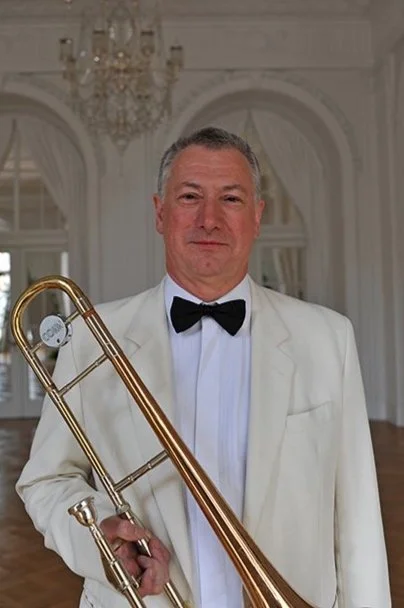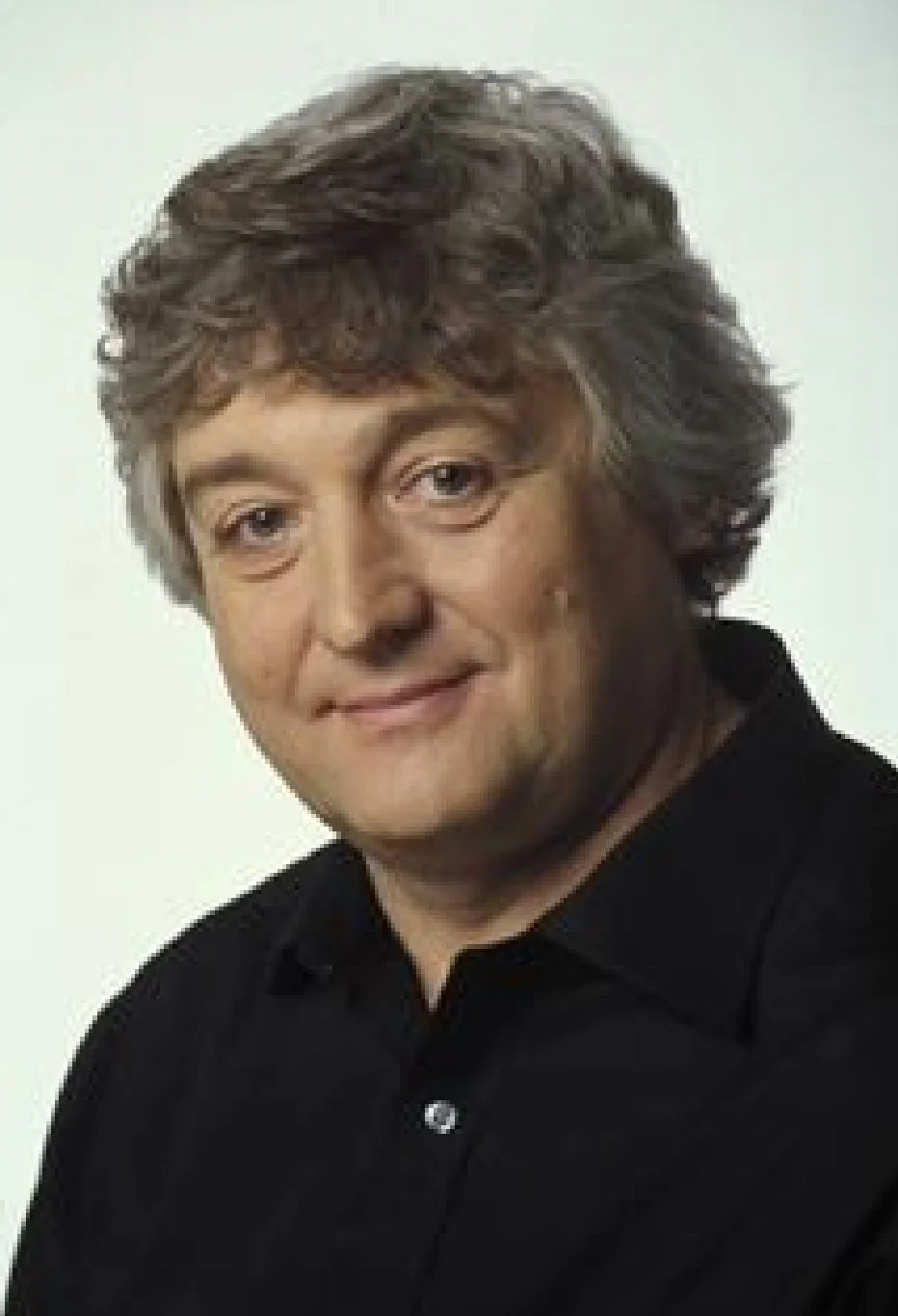Arrangers.
Roger Harvey.
Roger Harvey studied music at Oxford University and gained a teaching diploma at the University of London Institute of Education. Apart from a couple of years as a school music teacher his career was mostly as a trombonist, firstly as a member of the Halle then, on arriving in London to become a member of the Philip Jones Brass Ensemble, freelancing with all the major orchestras and ensembles. From 2000 to 2014 he was Co-Principal Trombone in the BBC Symphony Orchestra. He has been on the staff of the Royal Northern College of Music, Trinity College of Music, Junior Guildhall School of Music and the Royal College of Music. He has also been active as a visiting coach and adjudicator at all of the major conservatoires and has served on numerous other adjudication panels. On Philip Jones's retirement he became manager of the successor ensemble, London Brass. He was responsible for much of the musical direction and the administration of concerts, tours and recordings. As an active arranger he runs his own publication, BrassWorks, in which he makes available his many works for brass ensembles. He has run a brass arranging course at the RCM. Since his retirement as a trombonist he now stays very active by indulging himself with a variety of hobbies: Age has meant that playing squash has become a painful and frustrating sport so he makes do with racketball.
He has taught himself to play the viola adequately enough to perform with several high quality amateur orchestras in Tunbridge Wells and in London. He is attempting to resurrect his O-level French and is trying to prove that having never been able to draw is not a barrier to learning how to produce presentable pictures.
Arranging for Blackadder Baroque Brass By Roger Harvey
When Dave spoke to me about his plan to put together the various baroque instrumental families in a sort of 17th century brass band I found the idea of trying to produce music for it intriguing. Each of the 4 groups, natural trumpets, hand horns, cornets and sackbuts have their own particular qualities and technical limitations; bearing these in mind when writing for any of them individually is one thing but combining them in an ensemble would present all sorts of issues that would need to be addressed to find a way of producing a decent result, technically and musically acceptable to the players and pleasing for the audience.
For a start, the trumpets and to some extent the horns have a limited number of useable notes which are dictated by the harmonic series. The most flexible tessitura of the trumpet is its high register so needs to be used with some sensitivity to avoid fatiguing the lips of the players and the ears of the audience. The horns can use the hand in the bell to produce many of the missing notes but the quality of sound is altered, sometimes, significantly, so that the more muffled tone quality and reduced volume may prevent them from blending and balancing in chordal passages.
The cornets and sackbuts, being chromatic, are less of a problem in this respect but their relatively quiet volume would need careful handling when combining with the stronger trumpets and horns.
As the trumpets and horns are adjustable lengthwise by the use of different sized crooks they are available in a variety of pitches so it is possible to have, for example instruments in C, D, E flat, each of them able to contribute different sets of notes to the pool of available pitches. While this presents something of a puzzle to try to organise in a sympathetic and musically acceptable manner it is a useful technique.
Choice of repertoire seemed to be critical; it would need to be musically interesting enough for a concert programme but not so harmonically advanced to prevent the use of the natural harmonic instruments. It is tempting to give most of the melodic material to the chromatic instruments and fit in the trumpets and horns were possible but apart from being unsatisfactory for the players this would create an uneven feel to the melodic and harmonic line and texture of the music.
Perhaps the biggest technical challenge is to create something homogeneous from the four quite distinct sound worlds. In addition to this, the players of each group are accustomed to performing in quite different musical styles appropriate to the musical world in which they work. As arrangers it is important to make sensible choices about how to to distribute the original material, balance the voices etc. After this we hope that, if a decent job has been done, the intentions will be clear enough for the players to make sense of their individual parts and be able to adjust and refine their performance manner to fit in with the general requirements of the music.
Simon Wright
Simon Wright has been a professional musician since the age of 7 (as a member of the Manchester Cathedral Choir), with a career from serving as a young accompanist with the Hallé Choir (working regularly with Sir John Barbirolli) to conducting virtually every major classical orchestra in the UK, as well as orchestras in USA, Canada, Europe, Oman and South Africa.
He has a fine discography, with recordings for EMI, Naxos, Nimbus and several specialist labels.
He has worked with many brass groups and he is privileged to add David Blackadder to a list of performers of his arrangements which includes John Wallace and Alison Balsom.



